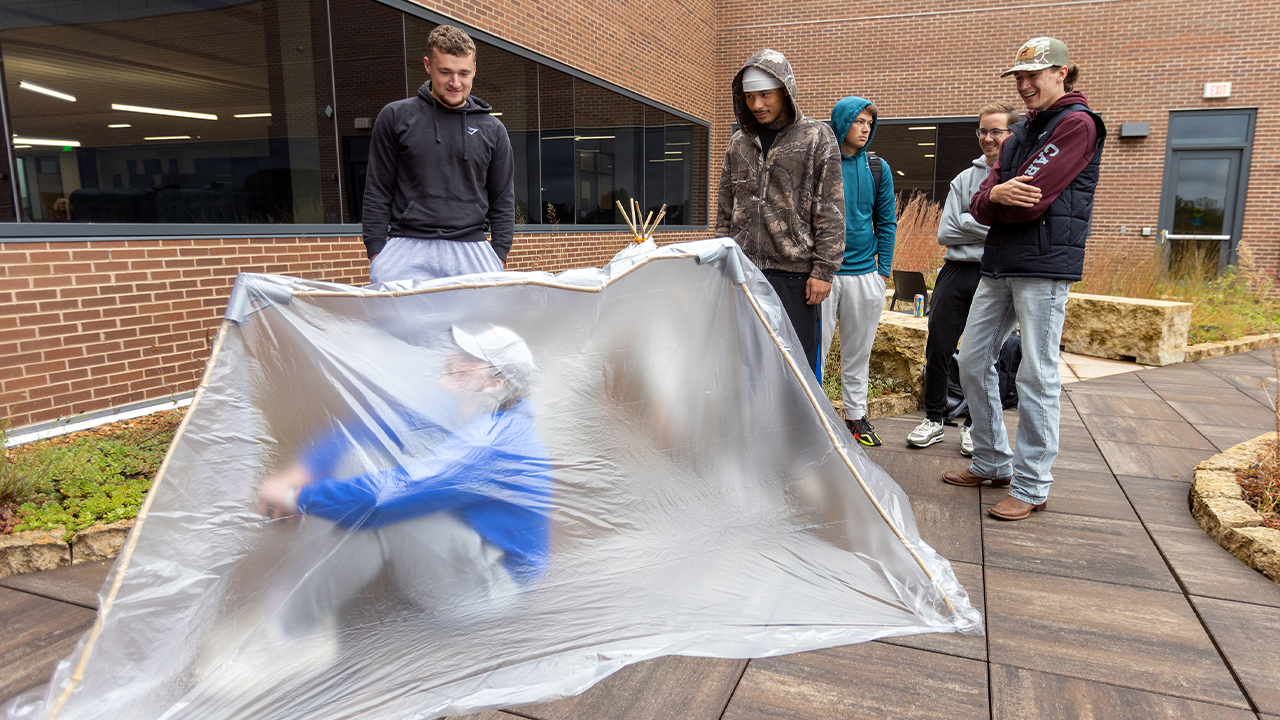
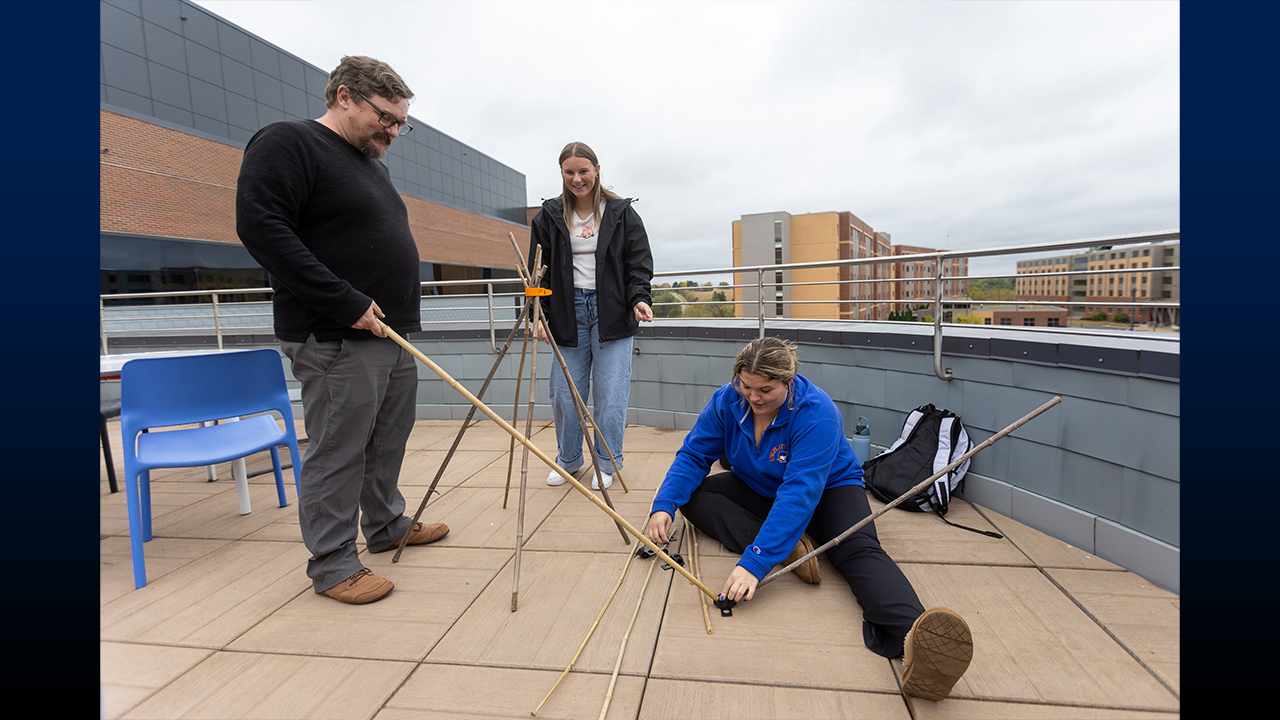
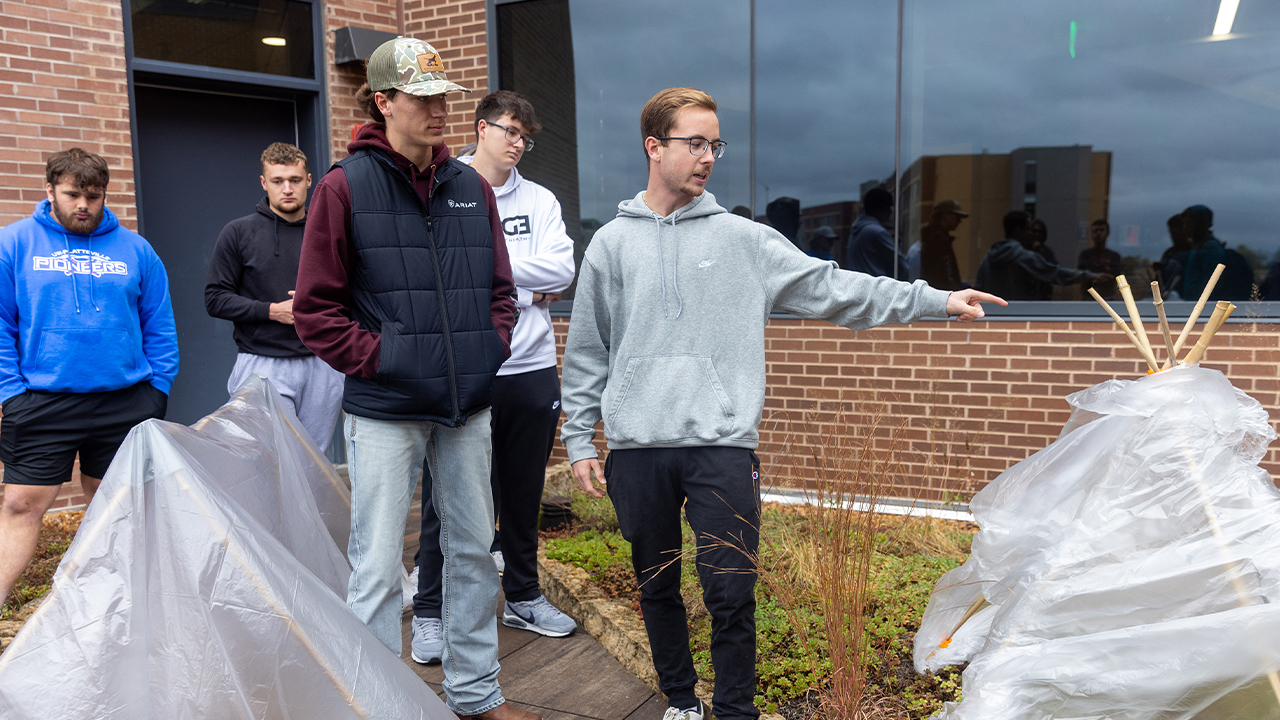
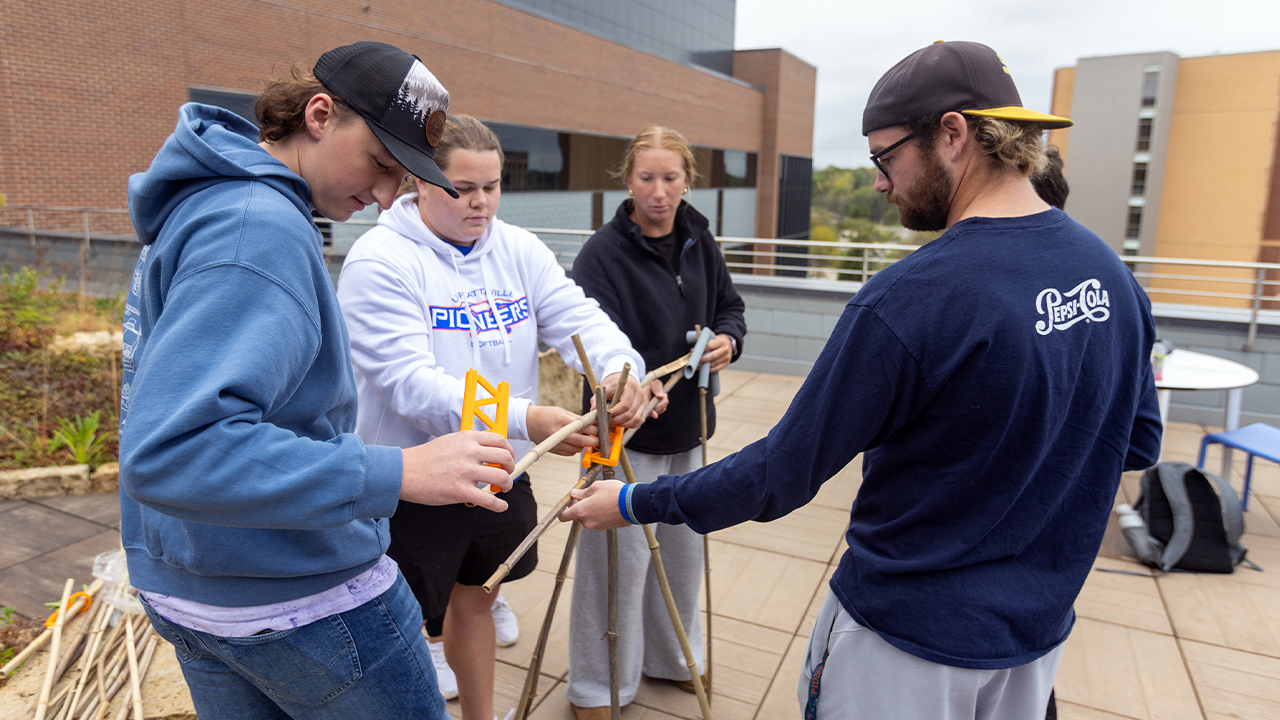
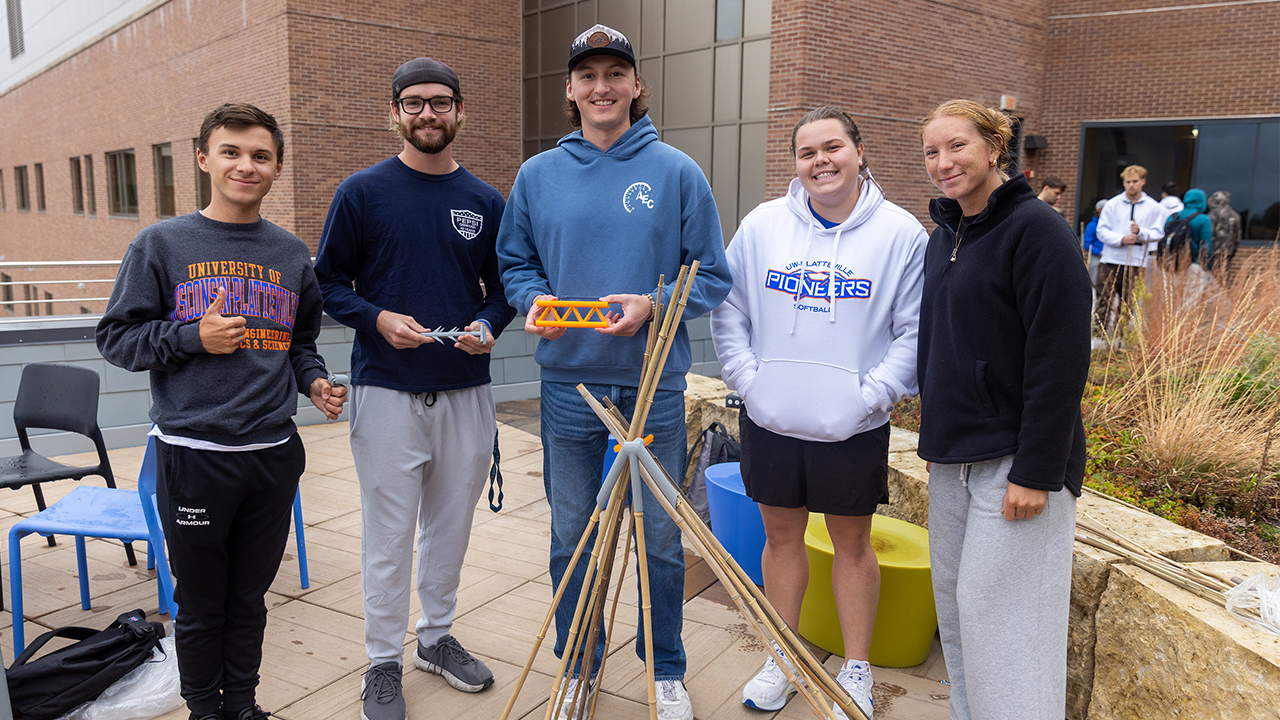
College is designed to prepare students for the next step in their lives; however, one class in the University of Wisconsin-Platteville’s Health and Human Performance program takes that idea literally. In HHP 3390: Lifetime and Outdoor Activities, students are learning survival skills in a hands-on way. Combining creativity, teamwork and high-tech tools, they partnered with the Huff Family Innovation Center on campus to design and 3D-print prototype components for survival shelters.
The project titled “Camping/Survival Product Prototype Assignment” challenged students to combine their knowledge of outdoor education with innovation and entrepreneurial thinking.
“This assignment gives students an opportunity to work in teams and design multipurpose 3D printed components to build a survival shelter using an Adventure Education problem solving tactic called ‘The Hand,’” explained Gail Hoffman, professor of health and human performance. “Each finger symbolizes a letter that directs their attention to solving the problem and completing the task as a group including ‘ask questions,’ ‘brainstorm ideas,’ ‘choose an idea,’ ‘do it’ and ‘evaluate’ their choice to make a functional product.”
Hoffman says the course in general is designed to prepare physical education and health and human performance majors to teach a wide range of outdoor and lifetime activities. Students not only learn theory and planning but also take part in peer instruction and hands-on learning opportunities like this one.
“My tent team included five members, and I learned how valuable collaboration can be,” said senior Lane Breitsprecker of Dubuque, Iowa, who is majoring in health and human performance with a physical education emphasis. “By sharing feedback and different perspectives, we each improved our individual designs and contributed to a stronger overall project.”
Each group was tasked with designing a portable, efficient product suitable for a real-world camping or survival scenario. Working in small teams, students developed products that could serve as structural elements, fastening systems, or utility tools for survival shelters. While the final products were prototypes, they were designed with real-life functionality in mind.
“The most challenging aspect of creating the tent component was learning to use computer-aided design (CAD) software and developing my own 3D-printable design,” recalled Breitsprecker. “I dedicated significant time outside of class to experimenting with my model and improving my CAD skills.”
The Huff Family Innovation Center, which supports interdisciplinary innovation across campus, provided students with access to 3D printers, laser cutters and digital design tools. For many students, it was their first experience translating a conceptual idea into a tangible product. The project underscored the unique opportunities the Huff Family Innovation Center offers for hands-on learning.
“There is a certain amount of fear and anxiety with learning new tools or entering different buildings outside your major, but the Huff Family Innovation Center staff, student mentors and overall culture of sharing and practice are working to counter this,” encouraged Andrew Woodard, director of the Huff Family Innovation Center.
The experience also allowed students to gain experience in the Huff Center, producing high-quality outdoor products, rather than relying on costly commercial alternatives for their future outdoor and lifetime instruction activities.
“People from all backgrounds on campus get the opportunity to learn, build and grow our UW-Platteville community of makers at the Huff Family Innovation Center,” said Woodard. “The search by many of our faculty like Professor Hoffman for high impact student engagements makes us a good collaborator.”
The experience concluded with each group presenting their final prototype and providing a brief explanation of its function, portability and practical application in outdoor education contexts.
“Through this tent project, I learned the importance of stepping back and not trying to do everything my own way,” admitted freshman Thomas Woodard, a construction management major from Batavia, Illinois. “I realized how valuable it was to communicate with my group and consider their ideas. I also learned to slow down and think through my design choices. At first, I rushed and tried to draw shapes manually, which looked messy. Later, I discovered that using premade shapes would have made the design much cleaner and more efficient.”
The final showcase last week offered students a chance to receive feedback from peers and professionals, rounding out a project that blended the outdoors with the cutting edge.
“I was happy to see my students learned how to use Tinker Cad and the 3D printers,” said Hoffman. “While some might think this project was out of the scope for this class, I would argue that gaining skills to work as a team is central for survival whether it be in the outdoors or in their future careers.”